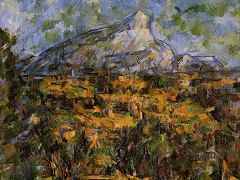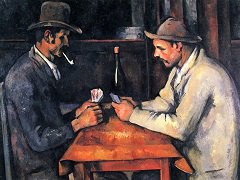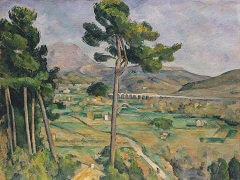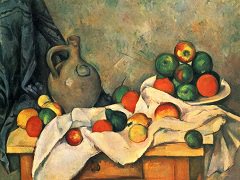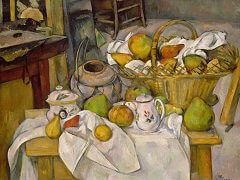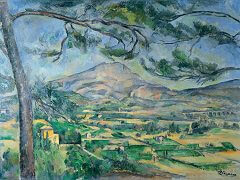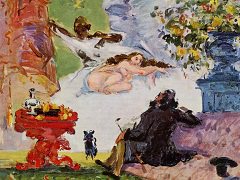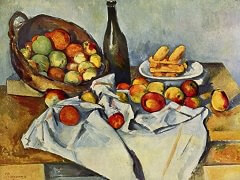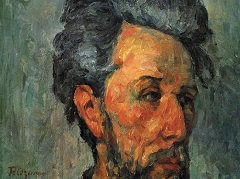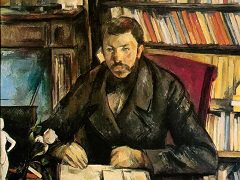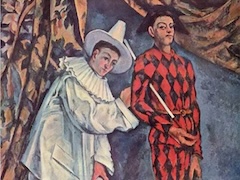Still Life with Apples, 1898 by Paul Cezanne
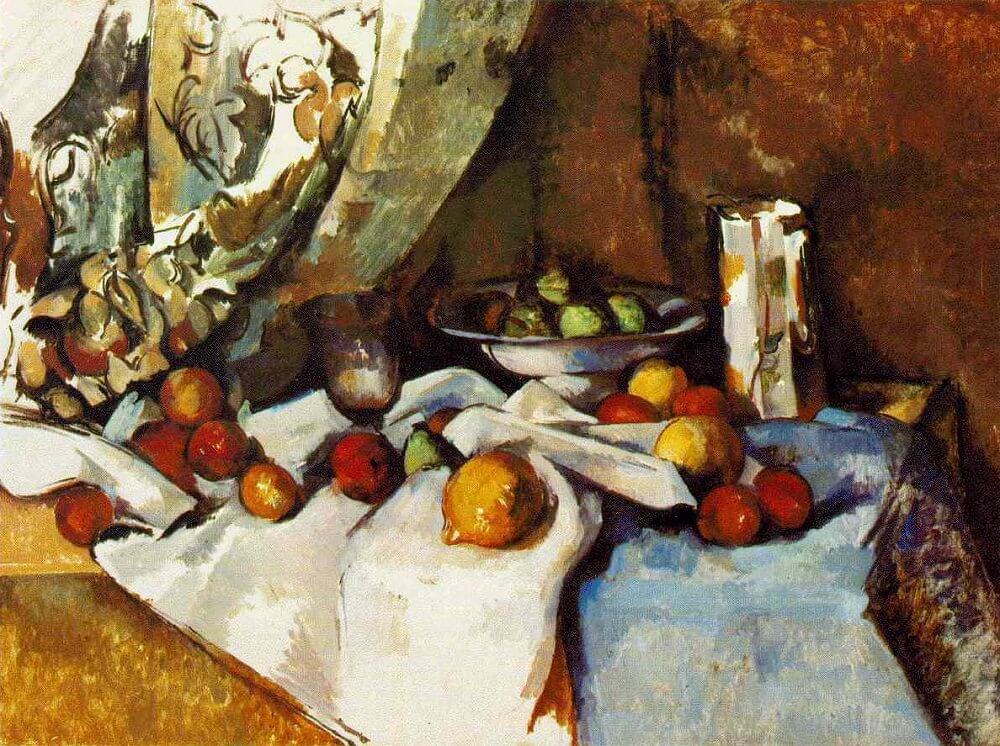
With Still Life with Apples 1798, Cezanne demonstrates that still life - considered the lowliest genre of its day - could be a vehicle for faithfully representing the appearance of light and space. "Painting from nature is not copying the object," he wrote, "it is realizing one's sensations."
Cezanne consistently draws attention to the quality of the paint and canvas - never aiming for illusion. For example, the edges of the fruit in the bowl are undefined and appear to shift. Rules of perspective, too, are broken; the right corner of the table tilts forward, and is not aligned with the left side. Some areas of canvas are left bare, and others, like the drape of the tablecloth, appear unfinished. Still Life with Apples, 1898 is more than an imitation of life - it is an exploration of seeing and the very nature of painting.
Cezanne was fascinated by optics and tried to reduce naturally occurring forms to their geometric essentials - the cone, the cube, the sphere. He used layers of color on these shapes to build up surfaces, outlining the forms for emphasis. His deep study of geometry in painting led him to become a master in perspective. Until the end of his life, Cezanne received little public success and was repeatedly rejected by the Paris Salon. In his last years, and particularly after his death, his work began to influence many younger artists, including Picasso, Georges Braque, and Vincent van Gogh.


